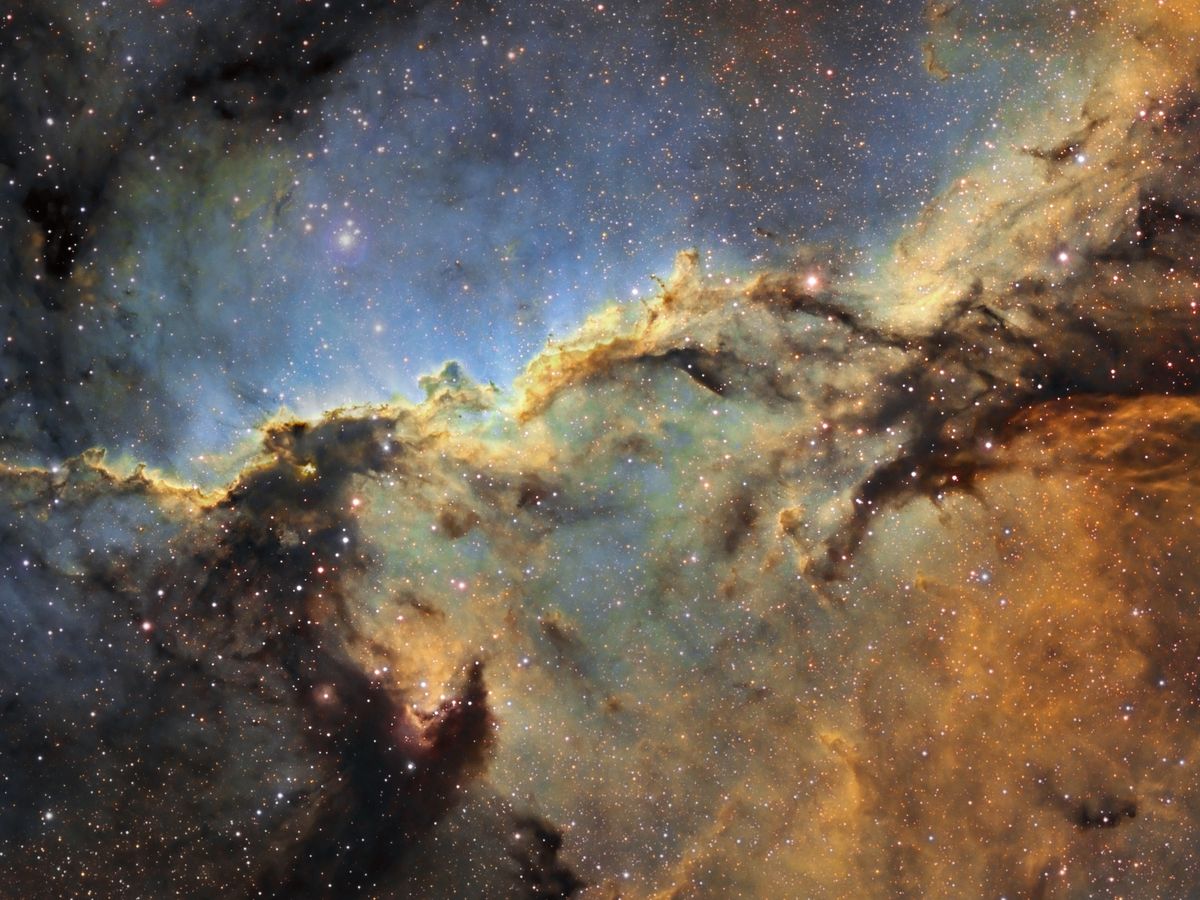
Buy a photo print NGC 6188, the Hands of God nebula
PSR B1509−58 is a pulsar approximately 17,000 light-years away in the constellation of Circinus discovered by the Einstein X-Ray Observatory in 1982. [2] It appears approximately 1,700 years old, [3] and it sits in a nebula that spans about 150 light years. [4] NASA described the star as "a rapidly spinning neutron star which is spewing.
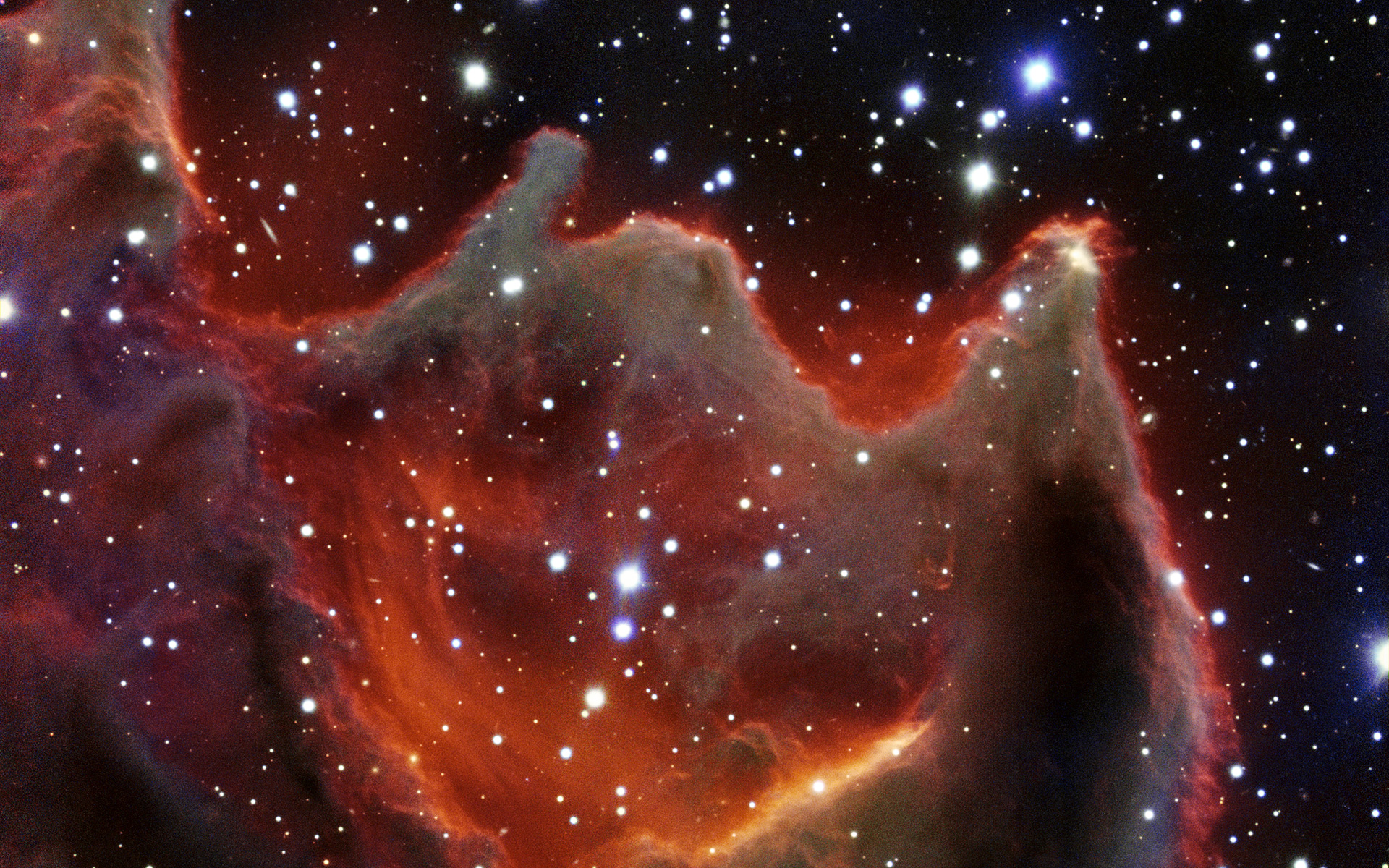
See 'God's Hand' In Amazing Cosmic Photo Space
Nicknamed the "Hand of God," this object is called a pulsar wind nebula. It's powered by the leftover, dense core of a star that blew up in a supernova explosion. The stellar corpse, called PSR B1509-58, or B1509 for short, is a pulsar: it rapidly spins around, seven times per second, firing out a particle wind into the material around it.

The Hand of God Image Abyss
This object may look to some like a hand X-rayed at the doctor's office, but it is actually a cloud of material ejected from a star that exploded. Nicknamed the "Hand of God," this object is called a pulsar wind nebula. It's powered by the leftover, dense core of a star that blew up in a supernova explosion. The stellar corpse, called PSR B1509-58, is a pulsar. It rapidly spins around, seven.

Nicknamed the "Hand of God" in popular culture, the pulsar reponsible
Nicknamed the "Hand of God," this object is called a pulsar wind nebula. It's powered by the leftover, dense core of a star that blew up in a supernova explo.

Beyond NASA photo, 'Hand of God' seen everywhere Horsehead nebula
The new image depicts a pulsar wind nebula, produced by the dense remnant of a star that exploded in a supernova. What's left behind is a pulsar, called PSR B1509-58 (B1509 for short), which spins.

The Hand of God Nebula Nebula, Nasa telescope, Hubble space telescope
0:00. 1:39. What looks like an X-ray of a hand is actually the remains of a star that exploded 17,000 light-years away. The astronomers who captured this image with a NASA space telescope call it.

The Hand of God in Space? Starts With A Bang
Nicknamed the "Hand of God," this object is called a pulsar wind nebula. It's powered by the leftover, dense core of a star that blew up in a supernova explosion. The stellar corpse, called PSR B1509-58, or B1509 for short, is a pulsar: it rapidly spins around, seven times per second, firing out a particle wind into the material around it.
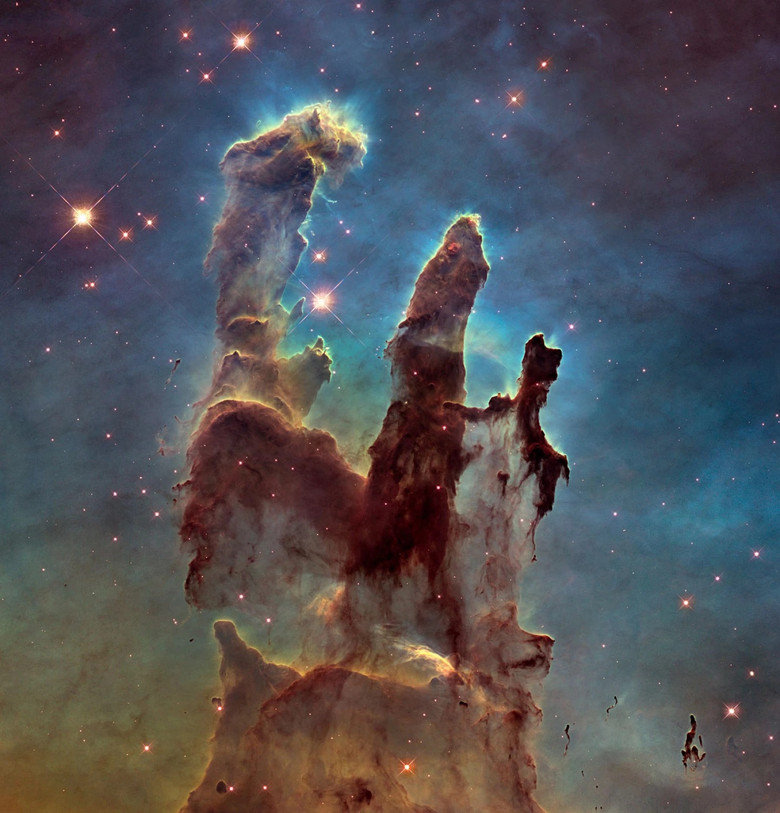
Better Eagle Nebula/Hand Of God pic
Nicknamed the "Hand of God," this object is called a pulsar wind nebula. It's powered by the leftover, dense core of a star that blew up in a supernova explosion. The stellar corpse, called PSR B1509-58, or B1509 for short, is a pulsar: it rapidly spins around, seven times per second, firing out a particle wind into the material around it.

The Famous Hand of God Photo B1509 Sky Image Lab
Published: January 9, 2014. Nicknamed the "Hand of God," this object is called a pulsar wind nebula and is powered by the leftover, dense core of a star that blew up in a supernova explosion. In this image, X-ray light seen by NASA's Chandra X-ray Observatory with energy ranges of 0.5 to 2 kiloelectron volts (keV) and 2 to 4 keV is shown in red.
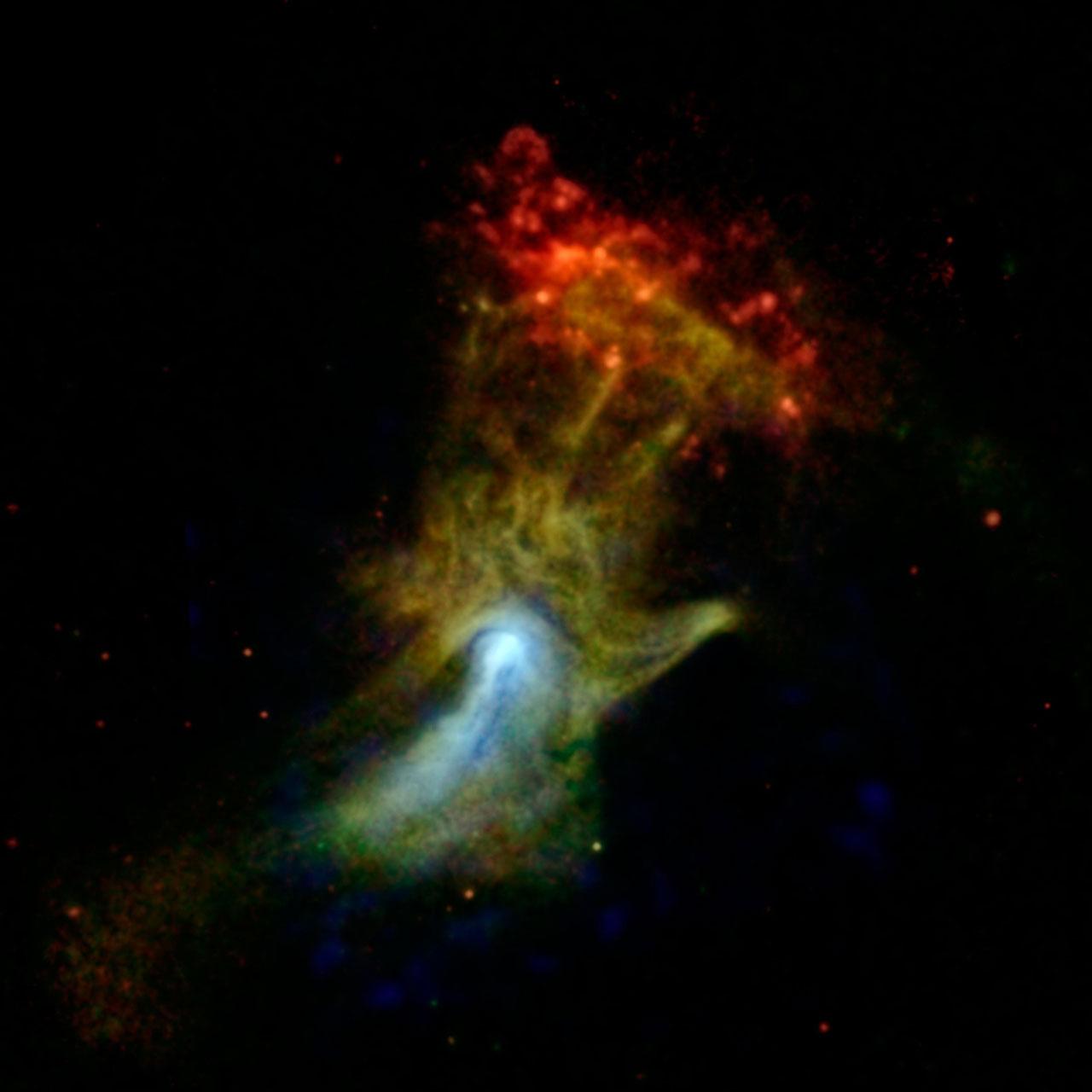
Hand of God nebula captured by Very Large Telescope SlashGear
Discover the secrets of the Pulsar Wind Nebula, a cosmic structure that resembles a human hand. Explore the magnetic field map and polarization measurements.

The 'Hand of God' Nebula Cosmic Hand Reaches for the Light. The blue
The "Hand of God," a pulsar wind nebula, is imaged here by NASA's Chandra and NuSTAR missions. X-ray View of 'Hand of God' Something strange and mysterious creeps throughout the cosmos. Scientists call it dark matter. Dark Matter - "Galaxy of Horrors" poster (English)

Hand of God Galaxy Giant Space Hand! Technomaly Nasa telescope
This image shows a pulsar wind nebula known as the 'Hand of God.' Image credit: NASA / JPL-Caltech / McGill. This object is the 150-light-year-wide energized remains of a star that went supernova almost 19,000 years ago. It lies in the constellation of Circinus around 17,000 light-years away.
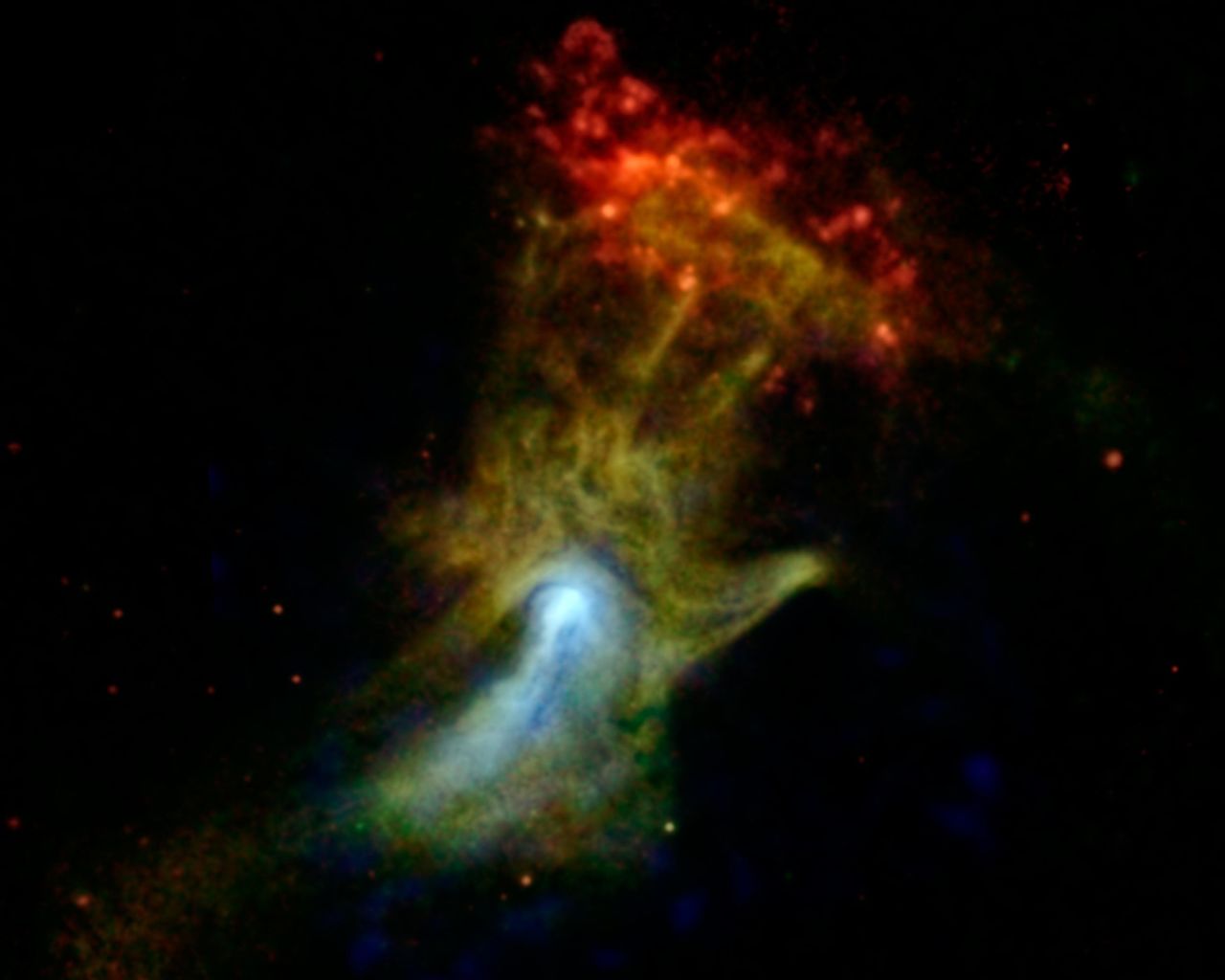
Space Images HighEnergy Xray View of 'Hand of God'
Hand of God: NASA's Nuclear Spectroscopic Telescope Array has spotted a pulsar wind nebula that resembles a gigantic ethereal right hand.

Hand of God Nebula (April 3 2009) NASA Religious Forums
The Hand of God, as seen in the Huffington Post. Seemingly, a Heavenly Hand reaches out to a spinning neutron star, releasing vast amounts of creative energy. Named by some as "The Hand of God". A small, dense object only twelve miles in diameter is responsible for this beautiful X-ray nebula that spans 150 light years.

New NASA Telescope Captures "Hand Of God" Phenomenon Picture Opposing
Hand of God. Released on May 14, 2014. This object may look to some like a hand X-rayed at the doctor's office, but it is actually a cloud of material ejected from a star that exploded. Nicknamed the "Hand of God," this object is called a pulsar wind nebula. It's powered by the leftover, dense core of a star that blew up in a supernova explosion.

Hand of God nebula captured by Very Large Telescope SlashGear
The ominous Hand of God Nebula (PSR B1509-58) is a window into the stellar afterlife. After exploding in a violent supernova, the star at the center of this nebula collapsed into a pulsar, or a.